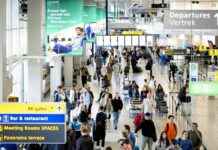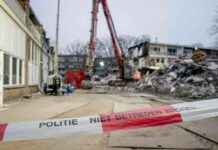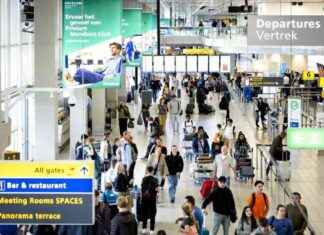Barefoot, the children played on the bridge over the ring road, patschten through puddles in the middle of the road. One summer, shortly before-the-century street in Charlottenburg, a turn-of-the Knobelsdorff. Heinrich Zille photographed this scene not far from his home: Behind the bridge turn left into Sophie-Charlotten-Strasse, where the sidewalks are almost as wide were in between, such as the patch.
Zille photographed on such excursions often brushwood-gatherers, returning with a heavily Laden handcart out of the Grunewald. But if he had to Dodge cars? Unlikely, only six years before the first Berlin had received approval for his car and the traffic was initially focused elsewhere.
A “quite ugly smell,”
“right ugly smell” have it disseminated, quoted Berlin police. However, you missed the Benz a indicator: A-1 – the first officially registered car in the emerging metropolis, in the year 1892. It looked more like a Carriage and was hardly a car faster than a horse. A wonderful feeling will it be to roar as the sole through the city. Without traffic lights at the taxis passing, the coachman, the frightened horses with difficulty held back. Whole families walked along the street and looked at the first motor carriages curious. The engine close pop-pop would soon become a constant background noise in the swelling roar of the big city.
120 years after Zilles snapshot of the knobelsdorff bridge, hardly anyone would take his children there on a voluntary basis. It smells strongly of exhaust fumes, which the Wind drives from the bottom in the nose. Blame the congested urban motorway which runs next to the tracks of the ring railway along.
The bridge, a tarmac replica, is damaged by the heavy traffic so much that the thickest trucks are no longer allowed to happen. On the way to Zilles, the old house is striking how narrow the citizens of the Sophie-charlotten increases-street. Otherwise, there is no place for the cross the road parked cars. A child who wants to step into the street, is easily overlooked.
“Walking, riding, Cycling, and Livestock”
children around the turn of the century had become at the end of your life, an incredible Transformation to witness. “Go, horse riding, Cycling, and cattle are allowed to drive at present, consistently,” it said in the Prussian right-of-way of 1905. However, in the faster and denser the traffic, the result of decades disrupted pedestrians and cyclists. First look left, then right, otherwise in danger of death. This is still true today. Every new lane of a road was considered progress, until the city planners abandoned in the sixties slowly from the mission statement of the car-friendly city.
Nevertheless, it was in Parts of the city to the time of the Wall still comparatively leisurely. The photo of Kreuzberg’s Oranienstraße conveys this impression. A few cars parked around 1970, at the edges of roads, leisurely, two men strolled across the street. What traffic is supposed to regulate the traffic lights in the picture? Nearly a half-century later, it’s over with in the relative peace and quiet. The green district mayor speaks of the “street Chaos” and no longer wants to make cars for all-day. “Cyclist hell” rant Bicycle activists, the O-road.
on the other side of the wall, place the edge of the road still remained. The large Trabi accumulations were found in front of the Palace of the Republic, or at the Bebelplatz. In Prenzlauer Berg, where the GDR had let many of the old buildings themselves, it gave way to the restructuring wave after wave of turning plenty of Parking space. Today, you would have to stack in the Christine street, the cars almost.
shift in Traffic with even more cars?
The shift in Traffic to get pedestrians and cyclists to the benefit of, if the place is in the city a fairer distribution. The extension of the urban A 100 motorway in the Treptower Park, in addition to, actually years ago, a done deal, is Stalled. An impending referendum on secure and better-maintained bike paths put the Senate under very high pressure, that he took up most of the claims in a law. The city should get far more bollards, the reckless wrong, Parker shut out, especially bike lanes on the road. Not even the Parking lot in front of the front door is more than secure.
reality shows but also in another direction: The car has become in Berlin even more popular, the admission numbers are increased at the beginning of the year of 2018, to 1.2 million vehicles. If, in the future, dirty diesel vehicles are replaced by electric cars may improve air quality, but the streets remain full. Mobility moved away not just from the car, even through a well-developed public transport. Rather, the traffic is increasing still more. Suppliers, clogging the streets with Online orders, which can hardly ever be transported with the cargo bike. Especially when the food products are brought to the front door.
On bike paths, it will close, if there is electric scooters and E-Skateboards wide. Game roads does not depend on self-to the Playground, just because there is a sign. And who is already sitting on a Parklet, referred to Island, landing in between parked cars, a few centimeters next to the flowing traffic? The shift in Traffic, it must be fought for. Sometimes this means bollard to bollard.
for More Before-and-After-pictures:
water gate place, 1900. The view goes through the Gitschiner Straße. The top of the U1 was built, the bottom of a horse-drawn carriage rumbled over the cobblestones. The coachman on the front of the Bock drew on the Kottbusser Tor the reins. On the North side, the houses stood directly on the high line. The second road was built later.
Kottbusser Tor, 1902. With the stroller on the Skalitzer Straße.
More about
mobility in the capital, Opposition Günther criticized as “Anti-car-Senator”
Robert Kiesel
Twelve of the Newsletter, twelve districts: Our people-the Newsletter from all districts of Berlin you can order for free here: leute.tagesspiegel.de








